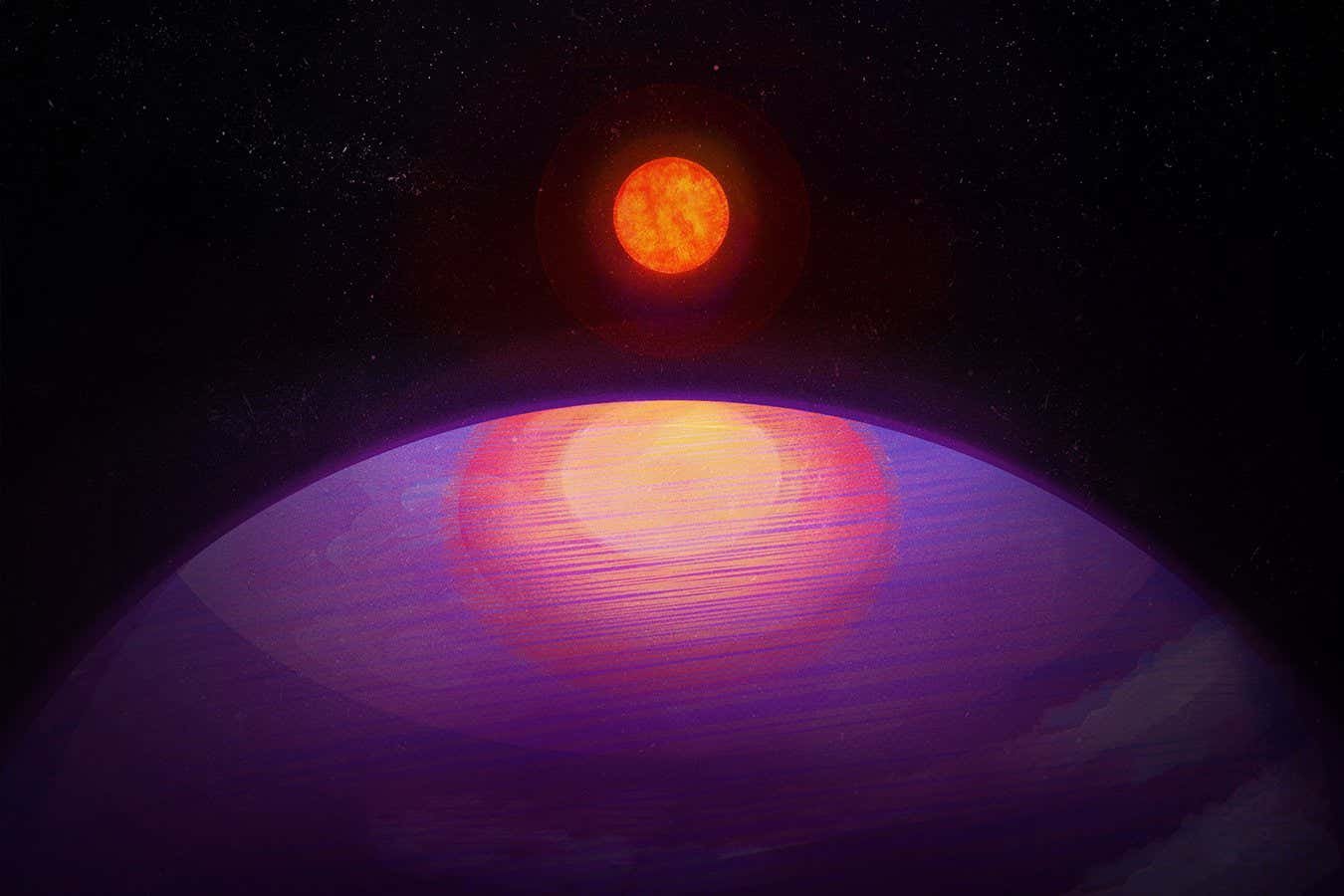
An artist’s rendering of the view from LHS 3154b towards its tiny host star
Penn State
An enormous planet orbiting a tiny star may break our ideas about planet formation. Astronomers have found a world more than 13 times as massive as Earth orbiting a star nine times less massive than the sun, and our best predictions of how planets form say that such a world should not exist.
Suvrath Mahadevan at Pennsylvania State University and his colleagues found this strange world, called LHS 3154b, using a procedure called the radial velocity method. In this method, astronomers look for the signatures of tiny wiggles in the position of a star as it is nudged by the gravity of an orbiting planet.
Their observations indicated that LHS 3154b orbits its star – which is called LHS 3154 and is about 51 light years from Earth – once every 3.7 Earth days, and that it is surprisingly massive. “At this close in of an orbit, we’ve never seen anything like this,” says Mahadevan. “We didn’t believe that something so small, such a dinky star, could have such a large planet.”
Generally, we think that planets form in one of two ways: either the protoplanetary disc of dust and gas surrounding a young star rapidly collapses under its own gravity to form clumps of material, or large rocks in the disc slowly accrete many smaller ones over a long time. The researchers performed hundreds of simulations of small stars with discs similar to ones that have been observed, and none of them formed a single world that was anything like LHS 3154b.
“Assuming a normal disc, neither of our planet formation theories seem to be able to form this planet,” says Mahadevan. “So this disc may have been much, much larger than we expected.” When the researchers performed the same simulations, this time with ten times as much solid material in the discs, massive worlds with short orbits began to appear.
While such colossal protoplanetary discs have occasionally been observed around larger stars, astronomers haven’t spotted any around small stars of the same type as LHS 3154. It isn’t clear how such a tiny star would acquire such a huge disc around it, so this finding may require researchers to rethink the very beginning of planet formation.
Topics:

